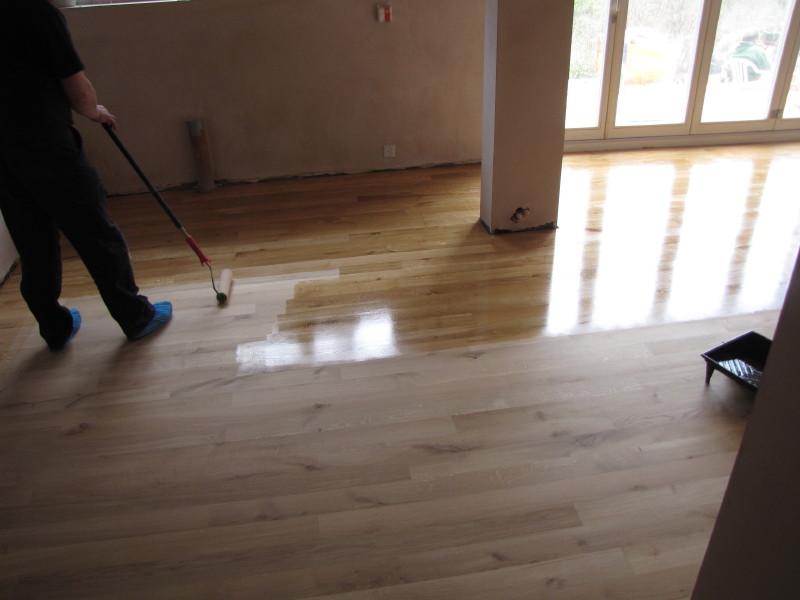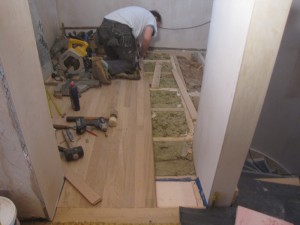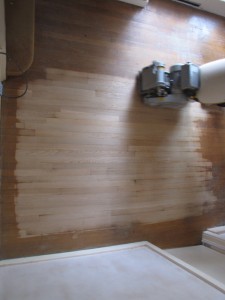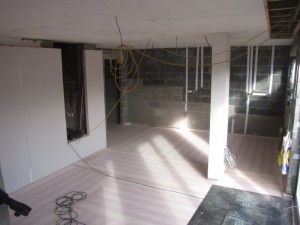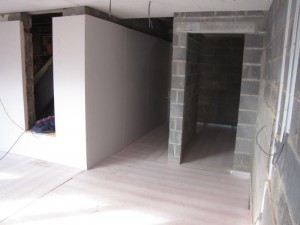The oak floor has now been installed on the lower ground floor. We use a local sanding specialist to both sand and oil the floor. At time of writing this post, the floor has only one coat of oil, but it looks really good. In the past I have hired floor sanders and got on with it myself, and was a bit sceptical on the advice that it should be done by a ‘professional’, but I was wrong. Knowing that the sanding company was doing the lower ground floor, I thought I would get them to do the hall on the ground floor too – a mixture of old flooring and new. The results were were astounding!
First the hall floor was installed by the carpenters. We had the existing oak floor (made in early 1960s) re-profiled so that the extension in the hall matched. We were never sure how the old and new were going to blend in – until it was sanded…
The top half of the photo is the new floor, the bottom part of the photo is the existing floor – I thought it would look different, a little darker, but it is pretty much identical. It needs to be oiled next – that will be the acid test, I guess. I think I might get these guys to do the other floor boards in the house!

